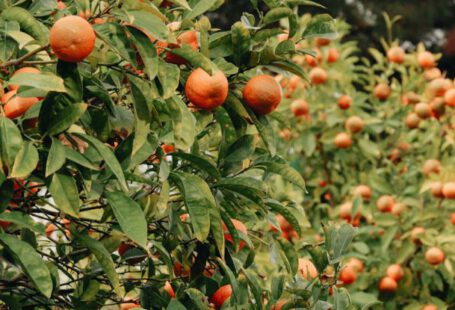**What Layering Techniques Maximize Your Bloom Space?**
When it comes to gardening and maximizing bloom space, layering techniques play a crucial role in creating a lush and vibrant garden. By strategically utilizing different layers in your garden, you can optimize space, improve aesthetics, and promote plant health. In this article, we will explore various layering techniques that can help you make the most of your garden space and create a stunning visual impact.
**Utilizing Vertical Space**
One of the most effective ways to maximize bloom space is by utilizing vertical space in your garden. Vertical gardening allows you to grow plants upwards, rather than outwards, which is especially beneficial if you have limited space. By utilizing trellises, arbors, and hanging planters, you can create a vertical garden that adds depth and dimension to your outdoor space. Climbing plants like ivy, jasmine, and morning glories are excellent choices for vertical gardening and can add a beautiful touch of greenery to your garden.
**Creating Layers with Plant Height**
Another layering technique that can maximize bloom space is to arrange your plants based on their height. By strategically placing plants of varying heights in your garden, you can create a visually appealing landscape that is full of texture and depth. Taller plants like sunflowers and delphiniums can be placed at the back of the garden bed, while medium-height plants like daisies and lavender can be placed in the middle. Low-growing plants such as creeping thyme and sedum can be used to fill in gaps and create a cohesive look.
**Incorporating Ground Cover**
Ground cover plants are an essential component of any layered garden design. These low-growing plants help to suppress weeds, retain moisture in the soil, and create a lush carpet of greenery that ties the garden together. Ground cover plants like creeping phlox, ajuga, and sweet woodruff are perfect for filling in empty spaces between larger plants and adding a pop of color to your garden. By incorporating ground cover plants into your garden design, you can create a cohesive and visually appealing landscape that maximizes bloom space.
**Mixing Textures and Colors**
When layering plants in your garden, it’s essential to consider the textures and colors of each plant to create a harmonious and visually interesting design. Mixing plants with different leaf shapes, sizes, and colors can add depth and dimension to your garden and create a dynamic visual impact. Bold foliage plants like hostas and ferns can be paired with delicate flowers like lilies and roses to create a striking contrast. By mixing textures and colors in your garden, you can create a layered and multi-dimensional space that is full of visual interest.
**Using Containers and Raised Beds**
Containers and raised beds are excellent tools for maximizing bloom space in your garden. By planting in containers and raised beds, you can create additional layers of planting space and add height and dimension to your garden design. Containers can be used to plant annuals, herbs, and small shrubs, while raised beds are perfect for growing vegetables, perennials, and ornamental grasses. By incorporating containers and raised beds into your garden design, you can make the most of your available space and create a diverse and dynamic landscape.
**Enhancing with Hardscaping Elements**
In addition to plants, hardscaping elements like pathways, patios, and retaining walls can also play a role in maximizing bloom space in your garden. By incorporating hardscaping elements into your garden design, you can create structure, define planting areas, and add visual interest to your outdoor space. Pathways lined with pavers or gravel can lead the eye through the garden and create a sense of movement, while retaining walls can be used to create terraced planting areas and maximize growing space. By blending plants with hardscaping elements, you can create a cohesive and visually stunning garden that maximizes bloom space.
**Maximizing Your Bloom Space with Layering Techniques**
In conclusion, layering techniques are essential for maximizing bloom space in your garden. By utilizing vertical space, creating layers with plant height, incorporating ground cover, mixing textures and colors, using containers and raised beds, and enhancing with hardscaping elements, you can create a lush and vibrant garden that is full of visual interest. Whether you have a small urban garden or a sprawling backyard, incorporating these layering techniques can help you make the most of your space and create a stunning outdoor oasis. Experiment with different plants, textures, and design elements to create a garden that is uniquely yours and maximizes bloom space.





